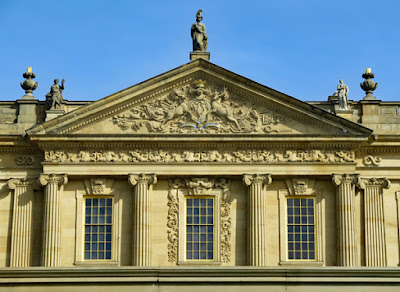 |
| One face of a revolving double sided sculpture |
 |
| Stoneface Creative on Storrs Lane |
 |
| A sculpted grindstone |
 |
| A sandstone sculpture |
I first came across Andrew Vickers at an event in Kelham Island Museum a few years ago and last year, when exploring the village of Grenoside, I discovered some more of his work – which I particularly liked.
 |
| A sculpture in the Wood Shed |
I had seen an advert for the Woodland Weekend event the year before but, being reliant on public transport, I thought that its remote location would make it very difficult to get to; however, making the most of the continuing dry weather, I decided to combine my visit with a walk along the River Loxley back to Malin Bridge, where I would catch a tram back to Sheffield.
 |
| A multifaceted sculpture |
From Treeton, where I live, to Storrs Wood, it needed two buses journeys and one on the tram to get to the Admiral Rodney at Loxley – which needed careful planning with the Sunday service – and then a further 15 minute walk, but I was so glad that I made the effort.
 |
| The war memorial on Storrs Lane |
Walking up from the River Loxley, the roadside on Storrs Lane – which has a war memorial and several sculpted gateposts - was packed with cars at lunchtime and this event was clearly very popular with families with young children.
 |
| A carved gatepost on Storrs Lane |
I briefly looked around the gallery space at Mill Spring House, before spending over an hour exploring the trail of mainly sandstone sculptures, which is in a magnificent woodland setting next to Storrs Brook, and then setting off to explore the River Loxley.
 |
| A sandstone sculpture |




















































